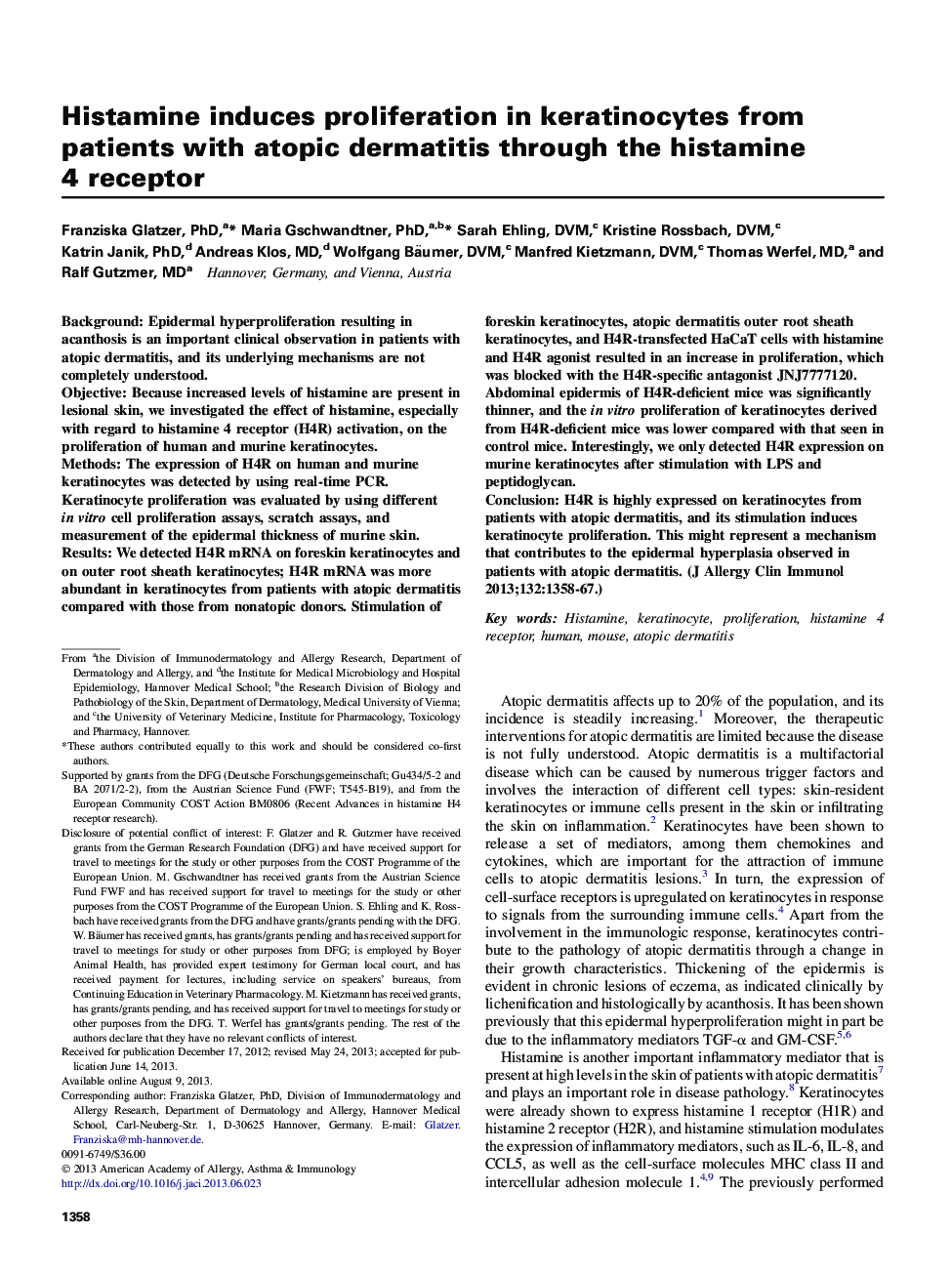| Article ID | Journal | Published Year | Pages | File Type |
|---|---|---|---|---|
| 3197811 | Journal of Allergy and Clinical Immunology | 2013 | 10 Pages |
BackgroundEpidermal hyperproliferation resulting in acanthosis is an important clinical observation in patients with atopic dermatitis, and its underlying mechanisms are not completely understood.ObjectiveBecause increased levels of histamine are present in lesional skin, we investigated the effect of histamine, especially with regard to histamine 4 receptor (H4R) activation, on the proliferation of human and murine keratinocytes.MethodsThe expression of H4R on human and murine keratinocytes was detected by using real-time PCR. Keratinocyte proliferation was evaluated by using different in vitro cell proliferation assays, scratch assays, and measurement of the epidermal thickness of murine skin.ResultsWe detected H4R mRNA on foreskin keratinocytes and on outer root sheath keratinocytes; H4R mRNA was more abundant in keratinocytes from patients with atopic dermatitis compared with those from nonatopic donors. Stimulation of foreskin keratinocytes, atopic dermatitis outer root sheath keratinocytes, and H4R-transfected HaCaT cells with histamine and H4R agonist resulted in an increase in proliferation, which was blocked with the H4R-specific antagonist JNJ7777120. Abdominal epidermis of H4R-deficient mice was significantly thinner, and the in vitro proliferation of keratinocytes derived from H4R-deficient mice was lower compared with that seen in control mice. Interestingly, we only detected H4R expression on murine keratinocytes after stimulation with LPS and peptidoglycan.ConclusionH4R is highly expressed on keratinocytes from patients with atopic dermatitis, and its stimulation induces keratinocyte proliferation. This might represent a mechanism that contributes to the epidermal hyperplasia observed in patients with atopic dermatitis.
